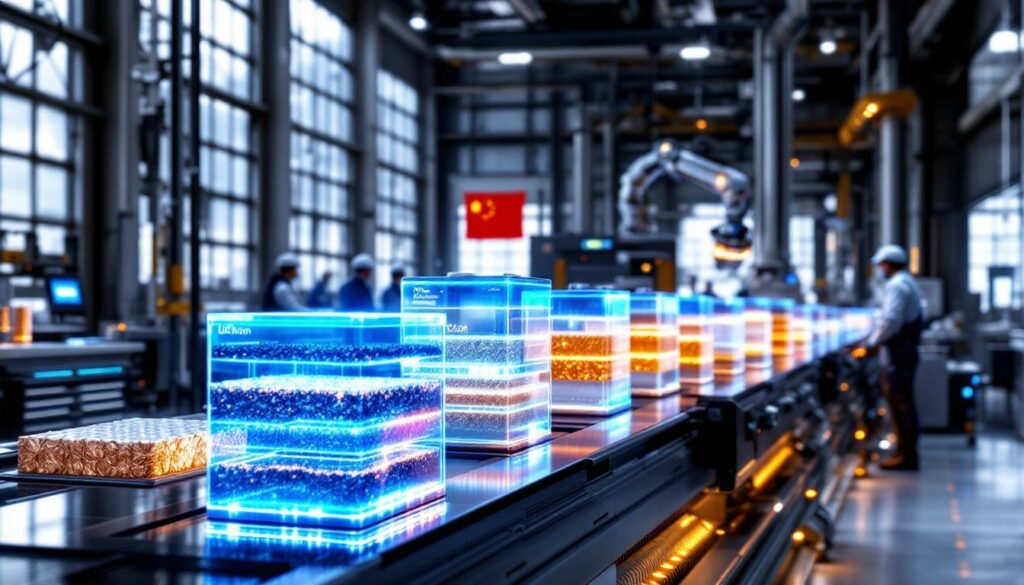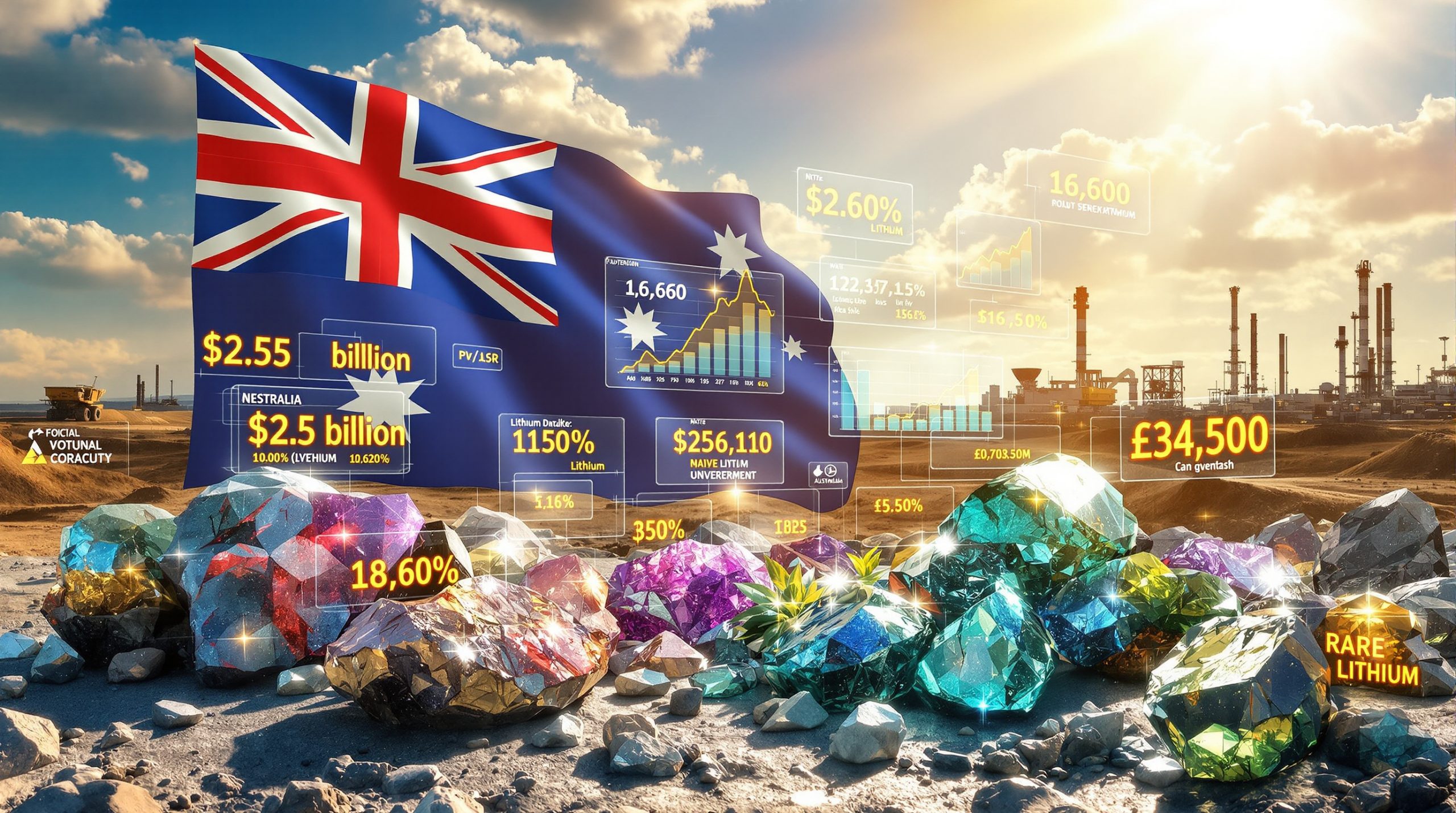What is Driving China's Lithium Battery Recycling Boom?
China's lithium battery recycling industry is experiencing unprecedented growth, driven by multiple factors that converge to create both economic opportunity and environmental necessity. With the world's largest electric vehicle market, China faces an imminent wave of end-of-life batteries that requires robust recycling infrastructure.
The Circular Economy Imperative
The push toward a circular economy forms the foundation of China's battery recycling boom. As millions of electric vehicles reach end-of-life stages, the volume of spent batteries is projected to reach 780,000 tons by 2025, creating an urgent need for responsible disposal and material recovery solutions.
Government policies have significantly accelerated this transition. China's Ministry of Industry and Information Technology (MIIT) has implemented stringent recycling guidelines that mandate producers to establish collection networks and achieve specific material recovery rates—creating both regulatory pressure and market opportunity.
"The recycling of power batteries is not just an environmental issue but a strategic imperative for China's resource security and technological leadership," notes a recent policy document from China's National Development and Reform Commission.
The economic incentives are equally compelling. With lithium prices experiencing significant volatility in recent years, recycling provides a more stable domestic supply source that reduces dependence on imported materials. Recovered materials from spent batteries can offset up to 35% of a battery manufacturer's raw material costs according to SMM industry analysis.
Key Materials Recovery Targets
Chinese recycling operations focus on recovering several high-value components from spent batteries:
- Lithium compounds: Including lithium carbonate and lithium phosphate, essential for cathode production
- Cathode materials: Complete LFP (lithium iron phosphate) and LMFP (lithium manganese iron phosphate) materials that can be directly reused
- Metal components: Aluminum and copper from current collectors and casing materials
- Graphite: From anodes, which can be purified and reused in new batteries
- Electrolytes: Recovery of fluorinated compounds and solvents
The recovery rates for these materials have improved dramatically with technological advances. Modern recycling processes can now recover more than 95% of cathode materials and 98% of metal components from spent batteries, making recycling increasingly competitive with primary mining.
How Are Chinese Companies Approaching Battery Recycling Technologies?
Chinese companies are pioneering multiple technological approaches to battery recycling, each with unique advantages and applications. The competitive landscape has driven significant innovation, particularly in reducing energy consumption and environmental impact.
Traditional Hydrometallurgical Processing
Hydrometallurgical methods remain the most established approach to battery recycling in China. This process involves:
- Mechanical crushing and separation of battery components
- Chemical leaching using acids to dissolve metal compounds
- Precipitation and extraction of individual elements
- Purification to battery-grade specifications
While hydrometallurgy achieves high recovery rates—typically 96-98% for key metals—it comes with higher environmental costs. The process requires significant chemical inputs, generates wastewater requiring treatment, and consumes substantial energy. Despite these drawbacks, hydrometallurgical recycling remains economically viable for high-value battery chemistries like NMC (nickel-manganese-cobalt).
Innovative Direct Recycling Methods
The most significant technological breakthrough in China's recycling landscape is the development of direct lithium extraction technology, exemplified by the MIDR (Meiteng Intelligence Direct Recycling) process pioneered by Tianjin Meiteng.
Unlike traditional approaches that completely break down battery materials into their elemental components, direct recycling preserves the crystal structure of cathode materials, allowing them to be reused with minimal reprocessing. According to Tianjin Meiteng's pilot project data, this approach delivers several key advantages:
- Process efficiency: 50% shorter processing time compared to hydrometallurgy
- Energy savings: Reduces energy consumption by 35-50%
- Carbon reduction: Cuts CO₂ emissions by approximately 40%
- Water conservation: Requires 60% less water than conventional methods
The MIDR process is particularly well-suited for LFP batteries, which dominate China's domestic market. As Tianjin Meiteng explains: "MIDR achieves efficient separation of cathode powder and aluminum current collectors with significantly lower carbon footprint, making it ideal for China's predominantly LFP-based battery ecosystem."
Automation and Intelligent Systems
Chinese recycling facilities are increasingly integrating advanced automation and intelligent systems to optimize operations. Zhongjie Renewable Energy's 30,000 mt/year facility in Hubei exemplifies this approach with five intelligent production lines that incorporate:
- Automated sorting systems: Using AI and machine vision to identify and separate different battery types
- Robotic disassembly: Reducing human exposure to potentially hazardous materials
- Real-time monitoring: Continuously optimizing process parameters for maximum recovery rates
- Quality verification systems: Ensuring recovered materials meet stringent specifications for reuse
These automated systems not only improve efficiency—reducing processing costs by up to 30%—but also enhance safety and quality control. The precision of these systems enables recovery of higher-purity materials that command premium prices in the battery metals investment landscape.
Major Lithium Battery Recycling Projects Across China
China's commitment to building world-leading battery recycling capacity is evident in the scale and sophistication of projects being developed across the country. These initiatives represent billions of yuan in investment and hundreds of thousands of tons in annual processing capacity.
Hubei Province Developments
Hubei province has emerged as a major hub for lithium battery recycling projects in China, hosting several flagship projects that showcase China's technological leadership in this field.
Zhongjie Renewable Energy has established a 30,000 mt/year waste power lithium battery recycling project featuring five intelligent production lines utilizing advanced automation technology. This facility is pioneering new pathways for battery resource utilization, with particular focus on recovering high-purity cathode materials suitable for direct reuse.
Even more ambitious is Hubei Ruipai Technology's comprehensive recycling initiative:
| Project Component | Capacity | Investment | Output |
|---|---|---|---|
| Total Investment | – | 2 billion yuan | Complete industry chain |
| LFP Black Mass Recycling | 43,800 mt/year | – | Precursor materials |
| Recycled LFP Cathode Production | 25,000 mt/year | – | Battery-ready cathode |
According to company statements, this project "forms a complete new energy industry chain from mineral resources to recycling," exemplifying the integrated approach Chinese companies are taking to battery materials.
Jiangxi Province Initiatives
Jiangxi province, with its established position in China's battery materials sector, is rapidly expanding its recycling capabilities to complement existing production.
Jiangxi Weibang Materials Technology is investing 210 million yuan to significantly expand its LFP cathode material recycling capacity from 3,000 mt/year to 10,000 mt/year. What makes this project particularly noteworthy is its integration with a 200 mt capacity sodium-ion battery cathode material production line—reflecting China's strategy of developing multiple battery chemistries simultaneously.
The province is also home to Jiujiang Tiansheng's innovative project producing battery-grade iron phosphate from iron slag, with a 100 million yuan investment. This facility supports Tangshan Henkun's ambitious plan to produce 350,000 mt of LFP cathode material annually, demonstrating how recycling operations are being strategically positioned to support manufacturing capacity.
Fujian Province Projects
Fujian province is establishing itself as an emerging player in the battery recycling landscape with strategic investments in comprehensive processing facilities.
Nanping Lithium Enjoy New Energy Technology is investing 220 million yuan in a 25,000 mt recycling facility in Shunchang County. This project includes:
- 20,000 mt/year capacity for scrap LFP batteries
- 5,000 mt/year capacity for scrap pole pieces
- Production lines for electrode powder, cathode powder, anode powder, and metal powders
This integrated approach allows for maximum value recovery from battery waste streams, with each component being processed into market-ready materials rather than intermediates requiring further refinement.
Other Regional Developments
Beyond these major hubs, significant recycling projects are underway throughout China:
- Tianjin: Meiteng's MIDR low-carbon recycling process pilot project demonstrating the commercial viability of direct recycling approaches
- Hegang: An 18,000 mt lithium battery recycling facility backed by 120 million yuan investment, focusing on material recovery from consumer electronics batteries
- Jiangsu: Dutong Technology's specialized 3,400 mt facility for scrap LFP positive pole piece recycling, with R&D on "regenerated LFP test battery cells"
- Sichuan: Yingda Lithium's massive 100,000 mt LFP precursor technological transformation project, using innovative ammonium-based processing
Collectively, these projects demonstrate China's nationwide commitment to establishing a comprehensive battery recycling infrastructure that can process hundreds of thousands of tons of spent batteries annually.
What Makes China's LFP Battery Recycling Particularly Significant?
China's focus on LFP (lithium iron phosphate) battery recycling represents a strategic decision with far-reaching implications for both domestic battery production and global recycling technologies.
Market Dominance of LFP Chemistry
LFP batteries account for over 70% of China's electric vehicle battery market, significantly higher than in other major markets like Europe or North America. This dominance creates both challenges and opportunities for recycling.
The massive scale of LFP deployment—with CATL alone producing over 100 GWh of LFP batteries annually—means that China must develop specialized recycling solutions optimized for this chemistry. While LFP batteries contain less valuable metals than NMC alternatives (no cobalt or nickel), they are produced and used in much higher volumes.
LFP batteries also typically offer longer lifespans than other chemistries, often exceeding 3,000 charge cycles compared to 1,000-2,000 for NMC. This extended lifespan means that recycling operations must be prepared to handle sudden surges in volume as large cohorts of batteries reach end-of-life simultaneously.
Technical Innovations in LFP Recycling
The unique properties of LFP cathode materials have driven specific technical innovations in recycling approaches:
Direct recycling methods have proven particularly effective for LFP chemistry due to the inherent stability of the olivine crystal structure. Unlike cobalt-based cathodes that degrade more significantly during use, LFP cathodes often retain their structural integrity, making direct recovery and rejuvenation more feasible.
Regenerated black mass production has become a specialty of Chinese recyclers, with companies like Jiangsu Dutong developing processes to restore the electrochemical performance of recovered LFP materials without complete breakdown and reconstitution.
"Our regenerated LFP test battery cells achieve 95% of the performance of cells made with virgin materials, while reducing production costs by approximately 25%," reports a senior engineer at Jiangsu Dutong.
Research and development in process optimization has yielded significant improvements in sodium-based and ammonium-based iron phosphate recovery methods. These approaches reduce chemical consumption by up to 40% compared to traditional acid leaching methods, making LFP recycling more economically viable despite the lower intrinsic value of its component materials.
Integration with New Production
Perhaps the most significant aspect of China's LFP recycling ecosystem is its tight integration with new battery production. Rather than operating as standalone facilities, many recycling operations are being developed as extensions of existing battery manufacturing capacity.
This integration creates several advantages:
- Direct material flows: Recycled materials can be fed directly into production lines without intermediate processing
- Quality control alignment: Recyclers can optimize their outputs to match precise manufacturing specifications
- Reduced transportation costs: Co-location minimizes logistics expenses
- Shared infrastructure: Utilities, testing facilities, and technical expertise can be leveraged across operations
Hubei Ruipai Technology's integrated facility exemplifies this approach, with recycling operations feeding directly into a 25,000 mt/year cathode material production line. This closed-loop battery recycling system significantly reduces dependence on primary raw materials while ensuring consistent quality.
How Are Investment Patterns Shaping the Recycling Landscape?
The investment landscape for battery recycling in China reveals important trends about how the industry is evolving and where it's headed. The patterns of capital deployment provide insights into the maturity, confidence, and strategic priorities of the sector.
Scale of Investments
Chinese battery recycling projects have rapidly scaled from modest pilot plants to industrial-scale operations requiring billions in capital investment:
| Investment Tier | Typical Capacity | Capital Range | Examples |
|---|---|---|---|
| Pilot/R&D | <5,000 mt/year | 10-50M yuan | Tianjin Meiteng MIDR pilot |
| Commercial | 10,000-50,000 mt/year | 200-500M yuan | Nanping Lithium Enjoy (220M yuan) |
| Industrial | 50,000-100,000 mt/year | 1-2B yuan | Hubei Ruipai (2B yuan) |
| Mega-projects | >100,000 mt/year | 3-5B yuan | Guizhou LFP precursor (4B yuan) |
This rapid scaling indicates growing confidence in recycling technologies and economics. Projects are increasingly implementing phased approaches to manage capital requirements while securing market position. Guizhou's massive 450,000 mt/year LFP precursor project, for example, is being deployed in stages, with Phase A representing 1.4 billion yuan for 300,000 mt/year capacity.
What's particularly notable is that these investments are occurring despite fluctuating lithium prices, suggesting that investors view recycling as strategically necessary regardless of short-term commodity price movements.
Strategic Partnerships
Investment in Chinese battery recycling is increasingly characterized by strategic partnerships that bring together complementary capabilities:
- Technology providers + manufacturing companies: Combining recycling expertise with production know-how
- Upstream + downstream integration: Linking raw material suppliers with battery producers
- Domestic + international collaboration: Bringing global best practices to Chinese operations
Regional economic development zones are playing a crucial role in fostering these partnerships. Provinces like Hubei and Jiangxi have established specialized battery industry clusters that encourage collaboration between recyclers, material processors, and cell manufacturers.
These partnerships extend beyond capital investment to include technology transfer, market access agreements, and long-term supply contracts. By securing both technological capabilities and market outlets, these arrangements reduce investment risk and accelerate deployment.
Return on Investment Drivers
The business case for battery recycling in China is built on multiple value streams that collectively improve return on investment prospects:
- Material recovery value: The primary revenue source, with LFP materials worth 30,000-40,000 yuan per ton
- Regulatory compliance advantages: Avoiding penalties and securing production permits
- Supply chain security premiums: Value of reliable domestic material sources
- Carbon reduction credits: Emerging value from emissions trading systems
- Government incentives: Tax benefits and subsidies for circular economy projects
Internal rate of return (IRR) calculations for modern recycling facilities typically project 15-20% returns over 10-year time horizons, competitive with other industrial investments. These projections increasingly incorporate carbon pricing assumptions, anticipating that China's emissions trading system will eventually recognize and reward the carbon benefits of recycling.
What Environmental Benefits Are Chinese Recycling Projects Delivering?
Beyond their economic value, battery recycling projects in China are delivering quantifiable environmental benefits that align with the country's broader ecological goals. These benefits span multiple environmental dimensions and represent significant progress toward sustainability.
Reduced Carbon Footprint
The carbon reduction benefits of battery recycling are substantial and well-documented. According to lifecycle analysis studies, producing cathode materials from recycled sources generates 35-60% fewer greenhouse gas emissions compared to production from primary mining.
The MIDR process pioneered by Tianjin Meiteng exemplifies these benefits, with company data indicating:
- 40% reduction in carbon emissions compared to hydrometallurgical recycling
- 60-70% reduction compared to primary material production
- Energy consumption reduced by 35-50% through elimination of energy-intensive processing steps
For context, every ton of recycled LFP cathode material represents approximately 2-3 tons of CO₂ emissions avoided. At the scale of China's recycling operations—hundreds of thousands of tons annually—this equates to millions of tons of carbon reduction.
The climate benefits extend beyond direct processing emissions to include reduced transportation impacts. By establishing domestic recycling capacity, China avoids the carbon-intensive shipping of raw materials from distant mining regions, further improving the lifecycle footprint of battery production.
Waste Reduction Metrics
Battery recycling is making significant contributions to China's waste reduction goals through several mechanisms:
Landfill diversion: Projects like Nanping Lithium Enjoy's 25,000 mt/year facility prevent thousands of tons of potentially hazardous battery materials from entering landfills or incinerators annually.
Hazardous material containment: Modern recycling facilities employ sophisticated containment systems to safely process and neutralize toxic electrolytes and other battery components, preventing soil and water contamination.
Mining impact reduction: Every ton of lithium recovered through recycling represents approximately 250 tons of ore
Ready to Capitalise on the Next Major Mineral Discovery?
Don't miss out on significant market opportunities when new discoveries are announced on the ASX. Discovery Alert's proprietary Discovery IQ model delivers instant notifications on high-potential mineral discoveries, empowering you with actionable insights ahead of the market. Explore our dedicated discoveries page to see how historic discoveries have generated substantial returns for early investors.




